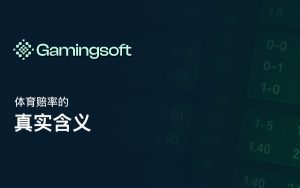Traditional sportsbooks used to be the main gateway for players — you picked a team to win, placed your bet, and waited for the result. Simple, right? But then came betting exchanges, platforms that changed how people think about wagering. Instead of betting against the bookmaker, players can now bet against each other. This innovation brought new opportunities — and also new terms like “back” and “lay” betting.
If you’re an iGaming operator, developer, or affiliate marketer, understanding how back and lay betting works isn’t just useful — it’s essential. These concepts lie at the heart of exchange-based products and can shape your business strategy, product design, and user education efforts. So, what’s the real difference between a back bet and a lay bet? Let’s break it down in the simplest possible way.

What Is a Back Bet?
A back bet is the most common type of bet. It’s what most people imagine when they think of sports betting.
You choose an outcome — for example, a football team, a horse, or a player — and bet that it will win.
If it does, you win. If it doesn’t, you lose your stake.
Example:
You back Team A to win a football match at odds of 2.0 with a $10 stake.
- If Team A wins → you get $20 (your $10 stake + $10 profit).
- If Team A loses or draws → you lose your $10 stake.
That’s it. A back bet is betting for something to happen.
What Is a Lay Bet?
A lay bet, on the other hand, is the opposite.
Here, you’re betting against an outcome — you believe something will not happen.
In simple terms, you’re taking the role of a bookmaker.
Example:
You lay Team A at odds of 2.0 with a $10 stake.
That means you’re saying Team A will NOT win.
- If Team A loses or draws → you win $10 (from the backer’s stake).
- If Team A wins → you pay out $10 (the backer’s profit).
However, there’s an important detail: your liability.
When you lay a bet, your potential loss isn’t just your stake — it depends on the odds.
At 2.0 odds, your liability is also $10 (1 × stake).
But at 5.0 odds, your liability would be $40.
That’s why understanding risk is so critical for anyone laying bets — whether you’re a trader or running a betting exchange.
Back vs Lay Betting
| Type | You Are Betting… | You Win If… | You Lose If… | Example |
| Back Bet | For something to happen | The selection wins | The selection doesn’t win | Back Team A to win |
| Lay Bet | Against something happening | The selection doesn’t win | The selection wins | Lay Team A to lose |
How Back and Lay Bets Work Together
Back and lay bets exist in pairs — for every back bet, there must be a matching lay bet.
That’s the foundation of a betting exchange.
Imagine a marketplace where players don’t bet against a bookmaker but against each other. One player wants to backTeam A, another wants to lay Team A. The exchange matches them.
The exchange doesn’t set odds or take risk. It simply connects the two sides and takes a small commission on the winner’s profit.
Example:
- Player 1: Backs Team A at odds of 2.0 with $10.
- Player 2: Lays Team A at odds of 2.0 with $10 liability.
If Team A wins → Player 1 wins $10 profit, Player 2 loses $10.
If Team A loses/draws → Player 2 wins $10, Player 1 loses $10.
This peer-to-peer model is what makes betting exchanges so innovative — and so different from traditional sportsbooks.
Why Back and Lay Betting Matters to iGaming Operators
Even if you’re not running a betting exchange, understanding these mechanics can give your iGaming business a strategic advantage. Here’s why:
1. Market Transparency
Exchanges show real odds based on user activity. This helps operators and data analysts observe true market sentiment— how the public values each outcome.
It’s valuable insight for anyone developing AI-powered odds models or risk management systems.
2. More Player Engagement
Back and lay options create more trading-style experiences. Players can open and close positions, hedge bets, or trade odds in real time — just like in a financial market.
This level of interactivity boosts engagement and retention.
3. Risk Management Insights
For B2B providers, studying back-lay behavior helps improve odds engines, liquidity management, and even affiliate targeting.
For example, knowing how users switch between backing and laying during live events can reveal patterns useful for product optimization.
4. Foundation for Arbitrage and Hedging Tools
Many advanced player strategies — including arbitrage, matched betting, and lay-to-back hedging — all rely on the back-lay relationship.
Understanding it helps B2B operators detect bonus abuse, manage liquidity, and develop smarter fraud detection algorithms.
Common Misunderstandings About Back and Lay Betting
Let’s address a few myths that often confuse even experienced bettors.
Myth 1: Lay Betting Means Unlimited Loss
Not always. While liability can be larger than the stake, exchanges clearly display your maximum exposure before you confirm a bet. It’s manageable when players understand the odds.
Myth 2: Only Experts Use Lay Bets
Lay betting can be simple once explained properly. It’s just betting against an outcome — a natural complement to back betting.
Myth 3: Exchanges Are Too Complicated
Modern iGaming UX design makes exchanges more intuitive. Some white-label and turnkey platforms even integrate simplified “trade” views that visualize back and lay as buy/sell actions.
Myth 4: Lay Betting Isn’t Profitable
Professional traders often find lay betting more consistent because it allows them to manage risk dynamically — especially when combined with in-play trading or cash-out features.
How Operators Can Simplify Back and Lay Concepts for Players
As a B2B operator or platform provider, part of your success lies in education. The clearer you explain back and lay concepts, the more confident and active your users become.
Here are a few tips:
- Visualize outcomes. Use color coding — green for back, red for lay.
- Show liability and potential profit instantly. Transparency builds trust.
- Offer “Quick Explain” pop-ups or short tutorials inside the betting interface.
- Include practical examples in help sections or social media content.
- Gamify learning. Reward users who complete “Learn to Trade” tutorials.
These UX and content design practices don’t just educate — they improve engagement and reduce support inquiries.
The Future of Back and Lay Betting
With AI, automation, and blockchain reshaping the iGaming landscape, back and lay betting could evolve even further.
- AI-powered odds models can dynamically match bets, enhancing liquidity.
- Decentralized exchanges may allow players to hold funds in digital wallets and trade outcomes with smart contracts.
- Predictive analytics could personalize suggested odds or recommend lay opportunities based on player behavior.
For B2B operators, this means the back-lay model isn’t just a betting mechanism — it’s an ecosystem of opportunity, data, and innovation.
Conclusion
Back and lay betting are two sides of the same coin — supporting and opposing an outcome. For players, they offer more control and flexibility. For operators, they open doors to deeper analytics, richer player engagement, and next-generation betting products.
Whether you’re designing a new sports exchange, refining your risk engine, or planning educational content for your users, mastering these core concepts is a smart move for any forward-looking iGaming business.
About Gamingsoft
Gamingsoft is a leading provider of online casino solutions, offering a comprehensive suite of services, including a white-label solution, API integration, payment solutions, game development, and more, to iGaming operators worldwide. With over years of experience, Gamingsoft has earned a reputation for delivering innovative and reliable solutions, helping clients succeed in the competitive iGaming industry.





